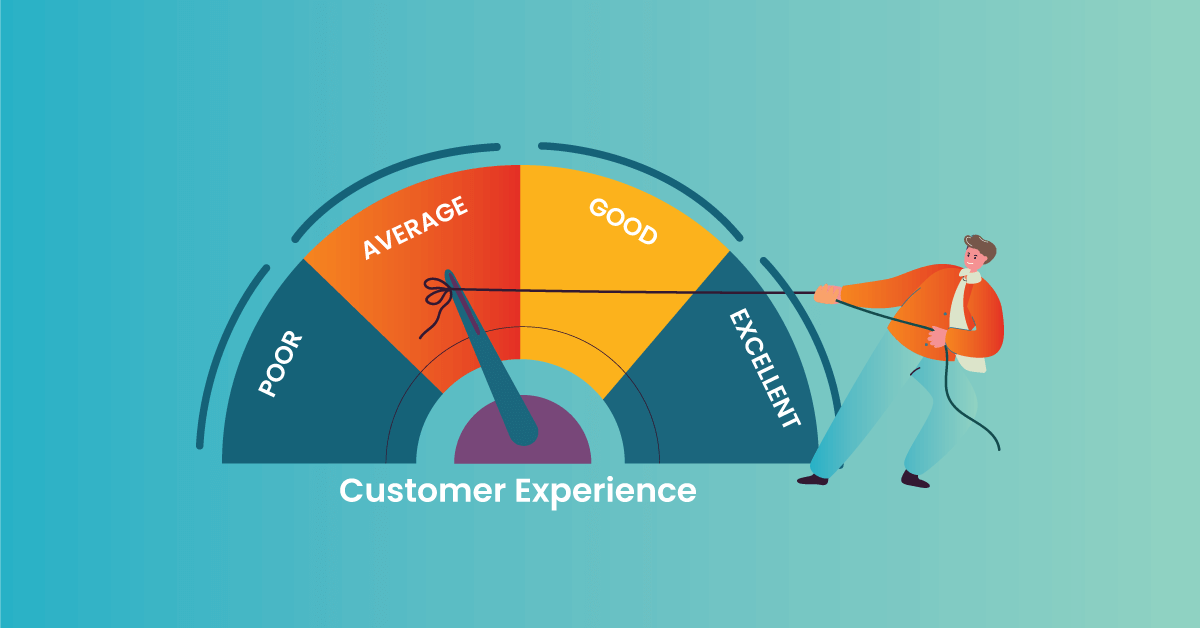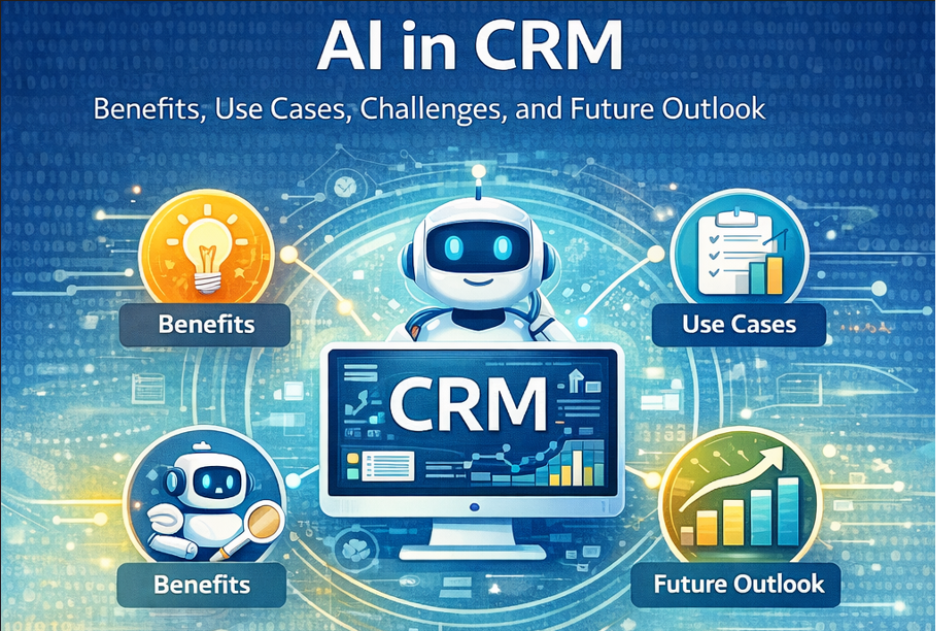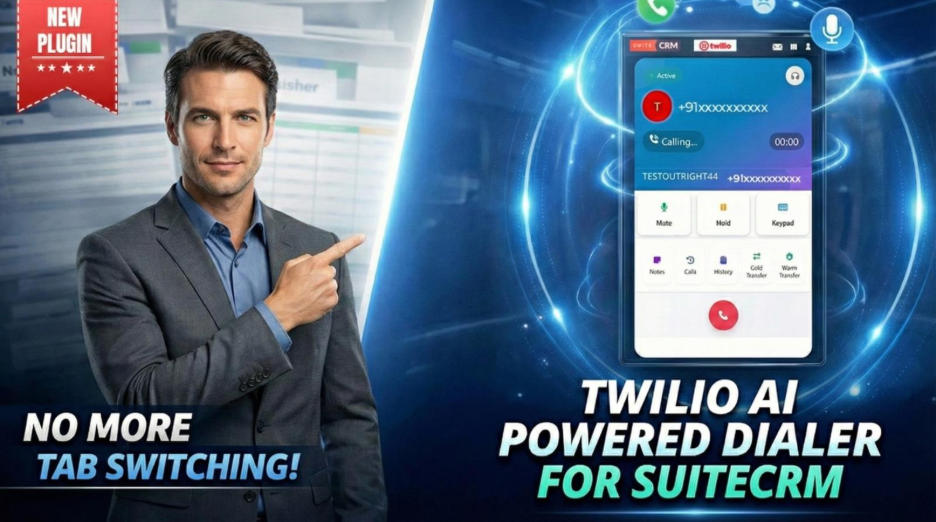In every business most important thing is the customer without customers no business can run. For customers, businesses advertise their products and services so that they can attract people and convert them into their customers. There are so many companies out there with the same product which increases the competition.
So, to sustain in this competitive market companies try to provide the best products and better services so that their company expands their market and increases their sales. In this process, there is so many steps are taken to attract customers.
In the end, every company gets customers, they can be few or more than expected. But making customers loyal to your company is hard because of competition. There is a way that you can do this so that your customers will trust your company product. Always Make good products and if you are a service provider company try to give top-notch service.
Making customers is not easy but giving them the best experience while interacting with the customer is more difficult. At this point, a successful customer experience strategy works and help business to make new customers and take care of existing customers.
What is a Customer Experience Strategy?
A customer experience strategy is defined as a complete plan to increase customer satisfaction and engagement in all interactions with your company. A customer experience strategy is a plan to improve the customer experience at every stage.
This includes basic knowledge of processes and other materials. A customer experience strategy includes a clear goal and achievable steps to meet customer satisfaction during their journey to interact with a product or service. It will also tell you how to measure and improve your efforts.
The Customer Experience (CX) is a method by which a company can know what customers think about their products and services. When a customer shares their experience with the company, the company can find what improvement is needed for the customer so that they can improve their Customer Experience (CX).
On the other hand, customer experience strategy helps to improve the experience of customers during the interaction. If a team wants to make a successful customer experience strategy, first they have to know the product or service properly. To create a successful Customer Experience Strategy there are some important steps are taken so that a brand or company can work on issues that occur.
4 Steps to create a successful customer experience strategy.
Step 1. Understand your Customer
Always start with understanding your customer's requirements and what they need and want to find for themselves. For example, the information of your customers like age, name, country, and language, can help you to deal with them in an easy way.
If you have a website and the traffic of visitors are all over the world you can give them details form and offer your service to them according to their interest. Targeting Only those people who are interested in your product or service is important because it reduces the cost of marketing and also helps to make the product and service better with the feedback of the customer.
Now you need to work on your product to find new customers and retain the old ones. Understanding your customer is the best and the first step to creating a successful customer experience strategy.
Step 2. Mapping Customer Journey
Now, you have a clear idea of your target audience and you know people who are interested in your product. So, start mapping your customer journey at every point when they interact with your business at every step.
keep doing this mapping process with every customer it will help you to understand the behavior of your customer while interacting with your business and the experience they gathered while interacting.
When visitors visit your website for the first time its matters that your website speed should be fast so that it will give a seamless and impressive experience visiting the website. Always be careful that there are no any error or glitches in your website because it will make a bad experience for the customers.
Step 3. Gather Customer Feedback
It is important that the company work for new customers but while working on that it's also important to always connect with your existing customer. Taking feedback from your existing gives you help in enhancing your customer experience.
Existing customers indirectly force the company to better service and products because every company knows that it is important to the older or existing customers that they have to do new things so that their customers will not go anywhere else.
Taking time-to-time feedback from existing and new customers can help a company improve its services and products. The company works in those areas so that it can provide a superior customer experience.
Step 4. Measure ROI
You have put in so much effort and worked so hard to improve your customer experience. Now to calculate the rewards of the effort and time that you have given there are several benchmarks that help you with this.
4.1 Net Profit Score (NPS)
Net Profit Score helps to examine customer loyalty and satisfaction with the company. It is a one-scale form that gives customers to rate of 0 to 10 it will help a company to understand individual customer satisfaction.
4.2 Customer Effort Scores (CES)
The Customer Effort Score is a way to understand how much difficulty appears to a customer to solve their query or how easily they solved it. It helps Customers to rate their experience from “very difficult” to “very easy”.
4.3 Customer Service Satisfaction (CSS)
Customer Service Satisfaction or CSS helps you to measure your post-sale service experience with your customers. It is an important factor that shows your customer's satisfaction. This metric helps with sharing surveys for post-sale service experience to customers.
Read Also: Get_ready_bell:client_pulse Explained: Strengthen Client Satisfaction with Real-time Insights
Tools for Creating A Successful CX Strategy
- Knowledge base software
A Knowledge base Software helps you to organize and manage self-service content. So that a company can resolve its customer's queries by providing them with how-to articles, FAQs, and Video tutorials.
- Self-service software
It acts as a searchable database for self-service resources So that users can find information and solutions if it is necessary they can reach out for further support.
- Call scripting software
Call center scripting software help in guiding agent to resolve customer problems on call in a systematic way. It decreases the agent’s errors while resolving queries and improves the efficiency of the work
- Customer feedback tools
Customer feedback is important for the company, it helps to improve the quality of products and enhance customer experience. Customer feedback software help to distribute the survey and gather feedback. So that you can analyze insight and act accordingly.
- Live Chat
A Live chat is a tool that helps to solve customer queries by chatting in real-time so that they don't have to wait for ticket generation or read through the knowledge base. There are many live chat applications for Twilio SMS, Zendesk, etc. You can try them now for free.
👉If you're exploring cost-effective options for real-time support, you can also consider a Zendesk alternative that offers similar features with easier onboarding for support teams.
Customer Experience Strategy - Success Stories
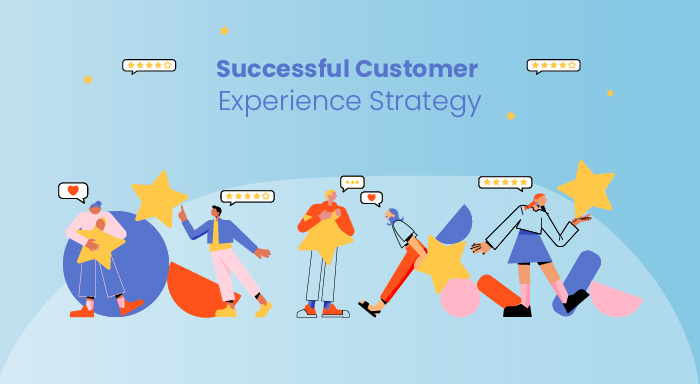
1. Slack’s Story of the SaaS Success Model
This success model of Slack set a new level for all the B2B tech space companies. 30% of the leads were converted to customers and there was a huge revenue generated highest of all time. Slack paid special attention to the NPS (Net Promoter Score) data at its initial launch and they also developed an interest in the growth and activation rates of new users teams.
They concluded that the success of all companies heavily depends on the success of one another. They worked on the innovation of new products and along with that they also focused mainly to give their customers and leads the best first experience possible. They followed the principle of the first impression is the last impression.
The first experience was made easy by making only 3 clicks sufficient to get started with the application. They also gave their customers another advantage if they stop using Slack due for any reason then they credit their accounts. They offered a nine-week training for the new employees so that the new employees can be groomed in the best way possible.
Due to all this Slack emerged as one of the leading B2B technology companies. Slack's sales to Salesforce contributed heavily to its success.
Comcast’s Success Story in the Field of Telecom Services
In order to have a good market share telecom companies are shifting their focus to customer service and customer experience. The huge challenge for them was to collect massive amounts of data from over 70 customer interaction channels and utilize them effectively. They followed the following strategies-
- The company created a Customer Experience Personalization (CXP) team to build a platform that would manage the collection and interpretation of customer data. The team was able to figure out 30,00,000 customer relationships of their company in a detailed form along with the customer journey.
- They also analyzed the customer experiences along their journeys to depict the trends and prepared a customer intelligence solution to analyze the datasets.
- They used Scuba Analytics to combine raw event data with datasets at a scale. Scuba Analytics has a very high speed and is very flexible.
- It allowed the CXP team to work in a hybrid model where data analysis is done quickly without any additional IT support. It solved all the problematic events in an efficient way.
- The team was able to know the number of proactive messages being received and responded to, conditions leading to inbound call support, and the impacts of proactive communication on customer contact rates, journeys, etc.
Sephora’s Success Story
Let's understand how Sephora managed to have hegemony over the beauty industry market. When smartphones entered the market, Sephora looked at it as an opportunity. Many people were searching on their smartphones for product recommendations and reviews. Hence Sephora launched their mobile applications to take the most advantage of the shifting trend. In fact, at a time the average download of their mobile application went to 87000 per week.
Other strategies of Sephora include-
- In 2007 they launched a program to give exclusive deals and offers to their clients.
- In 2012 it launched a Beauty Insider Card after realizing that 70% of its website traffic comes from iOS devices.
- In their application they provided a feature in which the users can scan the products they want to purchase and based on their requirements and preferences the application suggested products with good customer reviews and ratings.
- Due to their alertness and excellent strategies, the Beauty Insider program of Sephora now has over 17 million members contributing to 80% of the company’s sales in just North America. Customers with passbooks made twice more purchases than other customers. Their mobile sales grew 100% in the three years after their launch.
- The website visitors have shown a 22% increase in cross-selling and a 13-51% increase in upsell revenue.
- The company always focused on the 360-degree view of the customer lifecycle.
Impacts Of Bad Customer Experience On Business
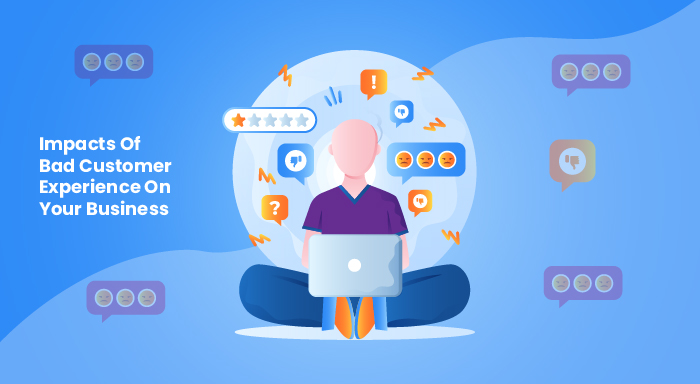
The various impacts your company can have due to a bad customer experience are-
- Tarnished Reputation
If your customers have a bad reputation with your company then they will end up putting bad reviews online not only on your company's website but also on your company's social media handles. Those reviews will be read by the general public and will stop them from considering your brand as a choice. Also when the customers are angry then their chances of posting a negative review is for sure and when customers are happy then they may not give a review also. So be really very cautious.
- No conversion of leads to customers
Every customer or lead nowadays first look for the reviews of a brand before deciding to choose a brand. If your brand has more negative reviews than positive ones then your leads won't turn into your customers and ultimately you will lose your sales.
- Lose your employees also
If some of your employees arent performing well then other employees will also get highly influenced by that attitude. Negative influence and work environment can ruin the entire decorum of your workplace. This will result in employees leaving your company.
- No revenues
With a bad customer experience, you will lose your sales and ultimately your company won't generate revenues.
Customer Experience vs Customer Service
| Customer Service | Customer Experience |
| It is a part of the customer experience. It is solving the issues that a customer faces during his/her journey with the brand. | It refers to the entire customer's journey starting from brand awareness and continuing till feedback and repeated purchases. |
| It is always initiated by the customers themselves. Whenever a customer has any problem they reach the customer support through their preferred channel of communication. | It includes all the factors of anticipating a customer's need. The activities include mapping a customer's journey, studying each stage of the customer's life cycle funnel website analytics, and asking for customers' feedback, etc. |
| It is quantified. It refers to a single event when a customer reaches out to customer service for help or guidance. | It cannot be quantified. It is a series of events, not a single event, it is the entire customer's journey as well as the relationship with the brand. |
How To Improve Customer Experience?
If you already have a customer experience strategy in place but still not getting any positive results then you need to improve it. Follow these fundamental guidelines to do so.
1. Illustrate the customer journey
It's essential to account for both the pre-and post-sale aspects of the customer experience. While it may be tempting to spend the majority of your focus on the interactions leading up to the sale, the post-sale is equally vital to building a complete customer experience. Think about different touchpoints that the customer interacts with and how those experiences impact the customer's perspective.
2. Equip and uplift your employees
Much of a customer's experience can be attributed to whom they interact with during their buyer journey. If employees think that they don't have the tools necessary to do their job efficiently or feel underappreciated, it can affect their ability to perform.
To uplift your employees when current customer experiences aren't up to par, you can:
It's also possible for customer experience to dampen by employees not meeting expectations that the company culture promises. Evaluate if your upper management, managers, and employees all understand the values and tone expected of the company culture, and adhere to it for each customer.
Making sure the employee experience is positive can increase the probability of delightful customer experiences.
3. Audit the customer experience from multiple internal perspectives
Since the customer journey is affected by every facet of your business, it's imperative that you don't focus on only one department when conducting an audit of customer experience. As we briefly mentioned before, customers interact in some way with every part of your business, so to gain a complete picture of CX, you will need to consider the unique perspective of each one of your internal departments. Here are three to get you kick-started:
4. Dedicate a clear focus on this initiative
Your client experience will not change overnight, thus it is critical to demonstrate to your entire organization a clear focus on your new objectives. Assign someone to oversee the execution of your customer experience plans. This individual could be a Vice President of Customer Success, a Chief Customer Officer, a Customer Success Manager, etc. It will be their responsibility to convey changes, support operations, coordinate research analysis, and take any necessary activities to guarantee that your new CX strategy is consistent throughout all areas of your firm.
5. Personalize interactions with customers
Depending on the scale and scope of your company, “personalize” can take on many different meanings. Personalizing experiences for your customer can help form a bond between the brand and the buyer. For instance, providing vouchers to the customer after their first purchase can personalize their experience and make them brand loyal over competitors.
Personalization doesn't have to just be a discount, it can take on many forms.
Conclusion
We talked about every aspect so that you can enhance your service with the help of Tools and metrics. Every step will give you results and help you to understand your customer requirements, So you can make a good customer experience strategy. We hope that this article solves your query related to enhancing customer experience.

